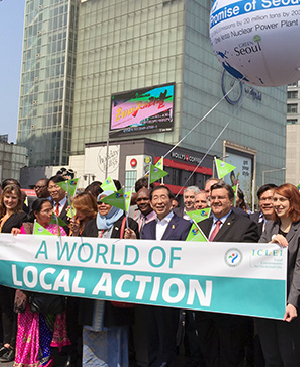- Start year:
- Type: Policy/Strategies/Action Plans
- Status: Completed
"Non-Motorised Transport (NMT) includes all forms of movement that do not rely on an engine or motor for movement. This includes walking, cycling, rickshaws, animal drawn carts (especially in rural areas), push carts and rollerblading or skating for recreational purposes. Ultimately, NMT grows liveable communities - it is the most basic part of the transportation system and pedestrians in particular contribute to the vibrancy of a community.
NMT is generally recognised as a valuable component of the transportation system and the environment we live in due to the various benefits it holds. These benefits include environmental benefits, increased liveability, improved health, economic gains and transportation benefits. NMT can address a large range of transportation needs ranging from regional mobility to neighbourhood access. There are various types of trips where NMT may be used as part of or for the entire journey, whether by choice or out of necessity. People who commonly use NMT
are commuters (trips to and from work), learners (trips to and from educational institutions,including libraries and sports fields), service users (these include trips to shops, markets and other service destinations) and recreational users (trips by locals or tourists to recreational destinations).
In the Msunduzi context, NMT is represented mainly by walking and cycling. As such, the policies and strategies are mostly developed around the needs of these users. However, the policies, strategies and resulting design and implementation projects should strive for improved
universal access. Such designs also take into consideration the needs of other users such as the special needs people that include the disabled, women with prams, shopping trolleys, etc.
The Msunduzi Municipality has until now not had a comprehensive plan guiding the planning and implementation of programmes and facilities to respond to the multiple needs of NMT users.
The NMT Plan for the Msunduzi Municipality aims to address this critical shortcoming in two ways. Firstly, it presents a policy, accompanied by a set of objectives and strategies to realise an improved NMT environment and culture in Msunduzi. Secondly, it develops a Strategic NMT Plan for Msunduzi that would identify areas and routes that should be considered
The Municipality’s vision is to: ‘Promote walking and cycling as a part of mobility by creating suitable, safe and attractive NMT infrastructure networks that meet the needs of all users.’
In order to achieve this vision it is recommended that the following be implemented:
•The projects and priorities in this report be adopted and implemented as soon as practicable.
In order to even further define and better prioritise future NMT programmes, the following recommendations should be implemented in the short to medium term:
•To adopt these NMT guidelines as being the design standard for the municipality and ensure project developers are aware of the municipal guidelines and adhere to the design standards.
•A NMT volume count programme / data base on major routes to be established and updated annually.
•A vehicular volume count programme / data base on major routes to be established and updated annually.An accident data base to be established and updated monthly.
•Before and after studies to be carried out on all NMT projects
•A data base for NMT infrastructure in the Municipality to be established and updated annually
"
Read More Read Less


